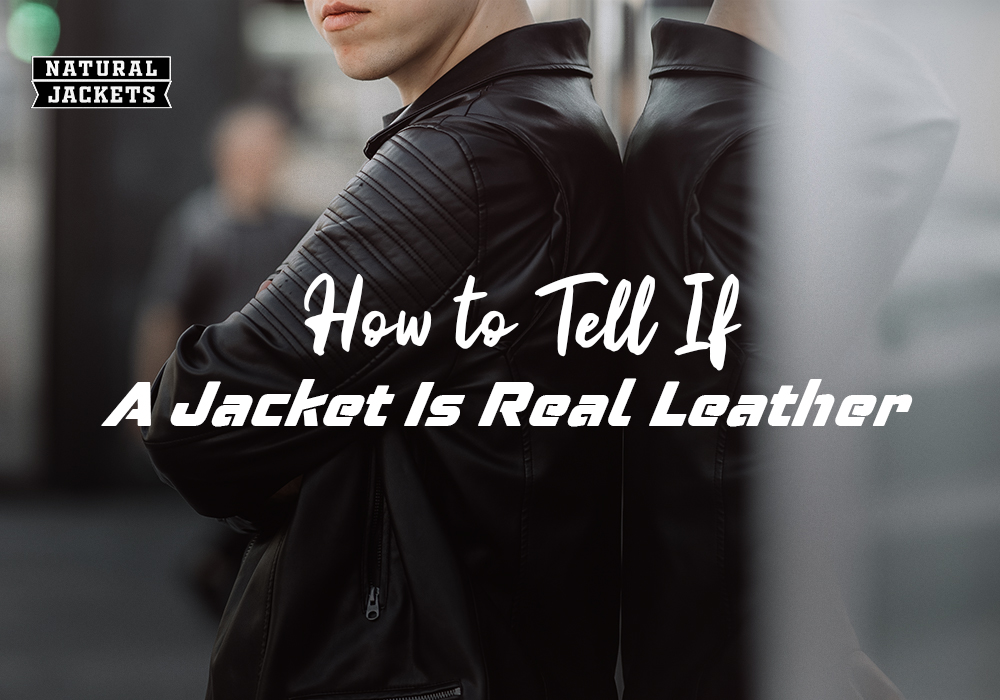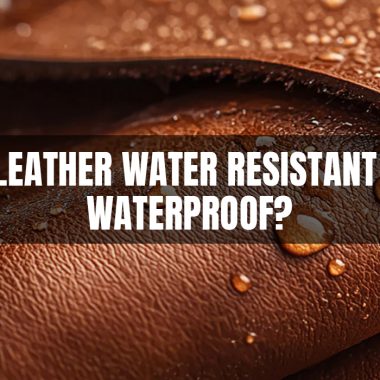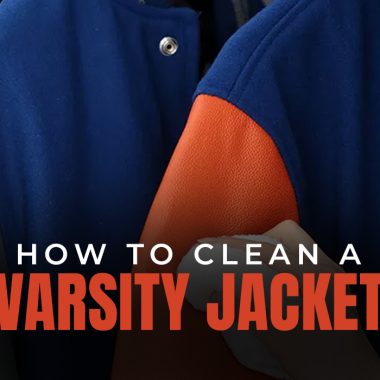Real leather carries a certain weight—you can almost sense it before even touching it. But with today’s lookalikes, telling the real from the fake isn’t always so obvious.
With so many brands labeling their jackets as “premium” or “genuine,” it’s getting tough to tell a real vs fake leather jacket apart. Some feel convincing. Some appear to be high quality. However, without understanding what to identify, you could end up with something much less durable than expected. So if you’re wondering, is my jacket real leather?, You’re not alone. And you’re in the right place.
This guide walks you through simple, proven methods for testing leather authenticity—from the way it smells and wrinkles to how it absorbs water or displays its natural grain. We’ll also break down misleading labels, pricing traps, and buyer tips that’ll help you shop smarter. If you’re investing in a genuine leather jacket, it pays to know what you’re getting. Let’s start with the basics.
What Is Real Leather? And Its Main Types
Not all leather is created equal, and that’s exactly where people get misled. One jacket might look expensive but wear out fast, while another gains character the longer you own it.
What qualifies as real leather? It begins with animal hide, typically from a cow, goat, or sheep. Rawhide isn’t wearable on its own. After tanning, the treatment process determines the jacket’s quality. Various cuts and finishes produce different leather types, with some being significantly better.
Let’s go over the four you’ll hear about most:
1. Full-Grain Leather
This is as real as it gets. It’s made from the top surface of the hide and left mostly untouched. You’ll often see natural grain, slight imperfections, and scars. That’s a good thing—it means it hasn’t been messed with. It’s thick, tough, and just gets better with age.
Learn more about the full-grain leather.
2. Top-Grain Leather
Still taken from the top layer, but it’s been sanded down a bit to smooth out the surface. It looks more polished and feels a little softer from day one. You lose some of the texture, but it’s still solid, long-lasting leather.
3. Genuine Leather
This is technically real, but it’s made from the inner layers of the hide—what’s left after the best parts are used. It’s more processed, cheaper, and won’t age as nicely.
Learn more about the genuine leather.
4. Suede & Nubuck
These come from the underside. Suede feels soft and fuzzy. Nubuck is smoother, like velvet. They look sharp, but are more prone to staining and scuffing.
6 Practical Tests to Spot Real Leather Instantly
Whether you’re shopping in-store or browsing jackets online, these hands-on checks will help you quickly determine what’s real and what’s not.
1. The Smell Test
- Real leather smells… like leather. It’s rich, a little earthy, sometimes even a bit smoky. It doesn’t smell “nice” in a perfume kind of way—but it’s distinct.
- Fake leather usually smells like plastic or glue. If you’ve ever unboxed something made from vinyl or synthetic rubber, it’s that same artificial scent.
2. The Touch Test
Run your hand across the surface.
- Real leather feels warm when you hold it. There’s some texture, maybe even soft wrinkles.
- Fake leather often feels cold or overly smooth, like plastic or a raincoat. It’s too perfect.
3. The Wrinkle Test
Gently pinch or bend the surface.
- If it’s real, the leather should wrinkle or crease slightly, then settle back.
- Fake leather stays flat and stiff—or snaps back like rubber.
4. The Pore Test
Look closely at the texture.
- Real leather usually has tiny pores, grain, or scars. It shouldn’t be uniform.
- Fakes tend to have a patterned texture that repeats. If it looks stamped or printed, trust your gut.
5. The Water Drop Test
Put a single drop of water on the surface.
- On real leather, it should slowly soak in and darken the spot.
- If it beads up or rolls off instantly, it’s likely not genuine.
6. The Edge Test
Check the edges of the material.
- Real leather has a raw edge—fibrous and sometimes uneven.
- Faux leather edges are usually sealed, plastic-like, or too clean-looking.
Choosing a leather jacket? Learn how material impacts your final pick
What Labels and Tags Don’t Tell You
A jacket tagged “genuine leather” might sound high-end, but that’s not the full story. It is real leather, yes, but it’s also the lowest quality tier. Made from the leftover layers of the hide, it’s more processed, less durable, and won’t age as gracefully. On the other hand, labels like “full-grain” or “top-grain” usually point to higher-grade materials, cut from the best part of the hide and built to last.
You’ll also see words like “PU leather,” “vegan leather,” or “man-made leather.” These are all synthetic alternatives, completely free of animal hide. Good for affordability, but not for leather authenticity. Country of origin is important as well—regions such as Italy, Pakistan, and the U.S. are known for their tanning expertise. Additionally, if a jacket bears an ISO certification or an official leather symbol, it indicates the brand’s confidence in its sourcing quality.
At Natural Jackets, every jacket clearly lists the exact leather type, and we only use real, responsibly sourced hides. Explore our men’s and women’s real leather jackets for guaranteed authenticity.
Can Price Reveal the Truth About Leather?
Let’s be honest—real leather doesn’t come at bargain-bin prices. It takes skilled work, honest materials, and time to get it right. If you’re seeing a leather jacket tagged under $100, take a closer look—it probably isn’t the real thing.
Some brands toss a large logo on a synthetic jacket and hike the price just to make it appear “premium.” But price alone doesn’t prove quality—it just gives you a clue. The real question is: what are you paying for?
That’s where sourcing matters. Brands that care about leather authenticity are open about their process and product. If something feels too cheap to be true, trust your gut.
Smart Buyer Tips Before You Spend
Before you invest in a leather jacket, it’s worth doing a little background check on the product and the brand. A real leather jacket isn’t something you want to guess on. Start by asking the right questions: What type of leather is it, and where was it sourced? If a brand doesn’t clearly mention whether it’s full-grain, top-grain, or something else, it’s already a red flag.
Examine the product photos carefully. Zoom in on the stitching, hardware, and interior lining. Cheap or overly shiny materials are easily identifiable when examined closely. Don’t forget to review the return policy—a reputable brand will always offer clarity and flexibility. And lastly, brand transparency matters. Trustworthy sellers will proudly share the origin of their leather and how it’s treated. If that information is missing, think twice.
Want to be sure before you buy?
Learn about different leather types before making your choice — from materials to style decisions.
Conclusion
Telling real leather apart isn’t about memorizing fancy terms or chasing the biggest price tag. It’s about getting familiar with how real leather actually behaves—how it bends, how it smells, how it wears in, not out. Once you’ve handled the real thing, the difference becomes clear.
You won’t need to second-guess every label or rely on vague buzzwords. You’ll just know. When choosing leather jackets, it’s not only about style but also durability, how well they fit over time, and whether they are truly worth the investment. Go with what feels right. Literally.
-
-
- XS
- S
- M
- L
- XL
- 2XL
- 3XL
- Clear
-
-
- XS
- S
- M
- L
- XL
- 2XL
- 3XL
- Clear
-
-
- XS
- S
- M
- L
- XL
- 2XL
- 3XL
- Clear
-
-
- XS
- S
- M
- L
- XL
- 2XL
- 3XL
- Clear
-
-
- XS
- S
- M
- L
- XL
- 2XL
- 3XL
- Clear
-
-
- XS
- S
- M
- L
- XL
- 2XL
- 3XL
- Clear
-
-
- XS
- S
- M
- L
- XL
- 2XL
- 3XL
- Clear

























